Kniphofia pauciflora
Kniphofia pauciflora Baker
Family: Asphodelaceae
Common names: dainty poker, few-flowered poker (Eng.); umathunga (isiZulu)
Introduction
This few-flowered, small poker with slender, lax flowerheads of gently flaring tubular yellow flowers, is one of the rarest species of Kniphofia. It is now known from just a single population in Durban that is under severe threat from development, and its future looks uncertain, because there are so few wild plants left, and no young plants are appearing in the population. Its preferred habitat is marshy grassland. Although rare and endangered in nature, it is well established in cultivation.
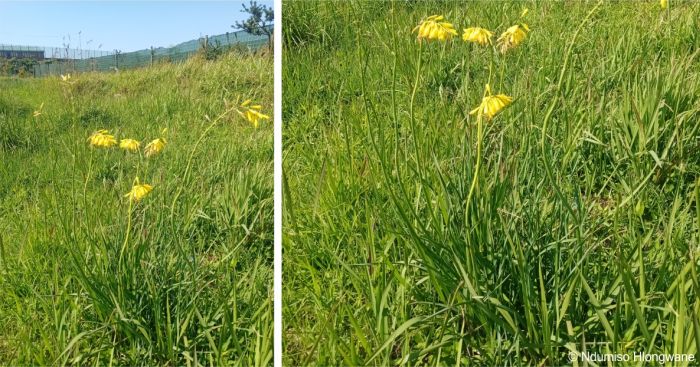
Description
Description
An evergreen perennial bulbous plant that grows up to 500 mm tall, with tufts of erect, pale green, strap-shaped leaves, 200–350 mm long and 2–8 mm wide. The flower spike is 300–500 mm long and the inflorescence is raised above the leaves. The inflorescence is 30–100 mm long and bears much fewer flowers that are more widely spaced when compared to other Kniphofia species. The plant produces slender pokers with deep yellow buds sparsely arranged on the flowering stem, opening to flared tubular yellow to pale yellow flowers, 14–18 mm long, in spring, from September to November, and intermittently through summer.
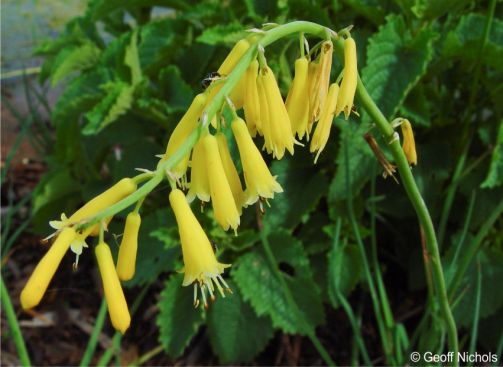
Conservation Status
Status
According to the Red List of South African Plants, the current (2007) conservation status of this species is assessed as Critically Endangered (CR). Kniphofia pauciflora was thought to be extinct in the wild until one small population was rediscovered in 1968 at Clairwood Racecourse in Durban, by South African botanist Himansu Baijnath.
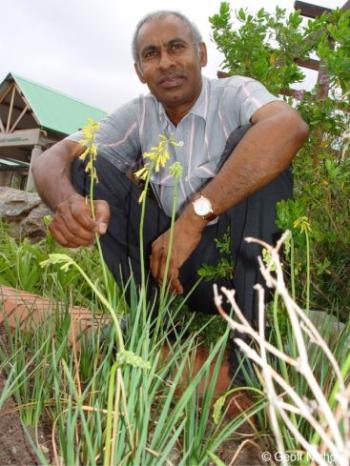
The species was assessed as Extinct by Hilton-Taylor in 1996 and Extinct in the Wild by Scott Shaw in 1999 but fortunately Baijnath had rescued some plants and propagated them, and the species was reintroduced to the Clairwood Racecourse in 1995. In September 2012, 21 clumps of plants were recorded at Clairwood Racecourse, with an average of six inflorescences per clump. The population was successful in this habitat because of the interest shown by Gold Circle, the former owners of the racecourse, and conservation efforts by Himansu Baijnath since 1968. The racecourse has now been converted into Clairwood Logistics Park. The owners of the park have established a conservation management plan for this species. This includes ensuring that the wetland where the species occurs is not disturbed by future developments, a small nursery has been established for the propagation and reintroduction into the wetland and other sites outside of the park, and a monthly invasive alien plant eradication plan has been developed. These measures will hopefully ensure that the current population of Kniphofia pauciflora is conserved, and that the number of individuals will increase. The conservation status of this species may improve if these measures are successful. However, another concern for the continued survival of this species in the last remaining natural population is the low number of individuals and the lack of seedlings and young plants in the population, which implies that the population may be surviving by vegetative reproduction alone, and that all the plants may be clones of the same individual and thus genetically the same.
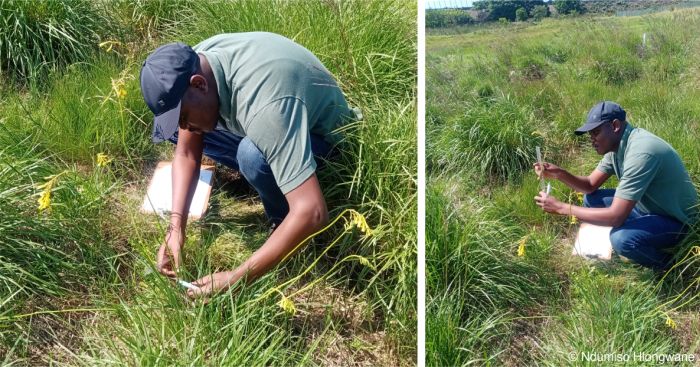
Distribution and habitat
Distribution description
Kniphofia pauciflora is a South African endemic, restricted to KwaZulu-Natal Province. It is currently known from a single locality in Durban, a small wetland area in the Clairwood Logistics Park, formerly the inner field of the track in the Clairwood Racecourse. Before 1956, Kniphofia pauciflora was known to have a wider distribution within the Durban area, where it grew in marshy grassland, but these populations were reduced and wiped out through urban development and this species is no longer found in the type locality, although it has been reintroduced to some reserves in the Durban area. The plant, originally found in marshy grasslands, moist grassland, swamps or wetlands, thrives in moist soil. Kniphofia pauciflora is most closely related to the white-flowered Kniphofia leucocephala, which occurs in similar grassland habitats around Richards Bay to the north of Durban. It also shows similarities with the Madagascan species, Kniphofia pallidiflora.
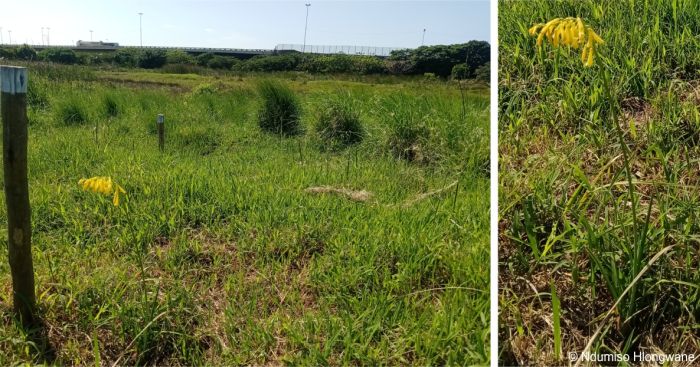
Derivation of name and historical aspects
History
The genus Kniphofia, which includes the plants commonly known as red hot pokers, was named in honour of Johannes Hieronymus Kniphof, 1704-63, who was Professor of Medicine at Erfurt University, Germany. Kniphofia belongs to the family Asphodelaceae, which comprises 17 genera (10 of which occur in South Africa) and about 750 species. About 71 species of Kniphofia occur in Africa, and 48 of these are found in South Africa. For a genus that is so instantly recognisable in gardens, it may be surprising to find that Kniphofia have been grown regularly in cultivation for the last 150 years. Although Europeans first became aware of Kniphofia in the 17th century, soon after colonisation of the Cape of South Africa, it was not until the mid-19th century that the genus became a regular feature in gardens.
Kniphofia pauciflora was first collected in the late 1800s, but all known sites in Durban were lost to development. The species name pauciflora is Latin and means ‘few flowers’.
Ecology
Ecology
The flowers of this species attract pollinating insects such as bees and butterflies to the garden.
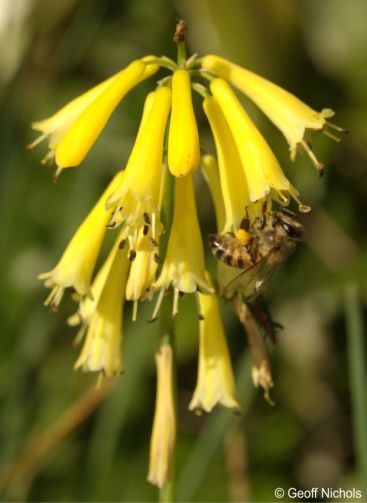
Uses
Use
Although threatened in the wild, the plant has a long history in cultivation and is a parent of many hybrids. There are no records of Kniphofia pauciflora being used for medicinal or cultural purposes. The genus Kniphofia has only a few species that are used in traditional medicine. Kniphofia laxiflora and Kniphofia rooperi help in the treatment of chest pains, while Kniphofia ritualis has been used in the treatment of shoulder pain . Kniphofia parviflora has been used as a snake repellent, while Kniphofia caulescens is used by the Basuto people as a charm against lightning. Kniphofia uvaria infusion has been used in the Xhosa people to treat women’s infertility.
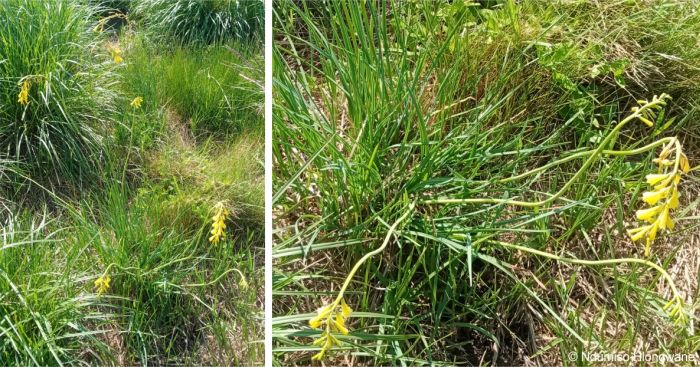
Growing Kniphofia pauciflora
Grow
Grow Kniphofia pauciflora in well-drained, rich soil located in an open sunny position or in partial shade. This species requires plenty of water during the growing season (spring and summer) if they are to thrive and flower well. They should also be fertilised monthly during their active growing period for best performance. In its subtropical habitat Kniphofia pauciflora is evergreen, but it is considered to be frost hardy in South Africa, surviving freezing temperatures by dying down in winter and resprouting in spring. In very cold climates it requires protection during winter. In cultivation, Kniphofia resent disturbance. Kniphofia pauciflora is ideally suited to permanently or seasonally wet grassy areas, around ponds or water features, as well as rockeries, mixed beds and borders. Also suitable for containers.
Kniphofia pauciflora can be propagated by division or seed. Large clumps can be divided and planted directly into the ground, although it is best to pot them and grow them on until they are well established. Seeds can be sown in spring, and they normally germinate in about 2 months. Once they have germinated, place the seedlings into their pots. Grow them on in the greenhouse for at least their first winter and plant them out into their permanent positions in late spring.
It grows best in moist, but well-drained soil; both loam and sandy soil are recommended mediums since they allow excess water to drain away, as poor drainage can be detrimental. The soils must be slightly acidic to neutral in pH, and they must receive full sun or partial shade. It is essential to plant Kniphofia pauciflora in well-draining soil to prevent root rot and ensure healthy growth.
References
- Aquatic Plants SA. Kniphofia pauciflora. https://www.aquaticplants.co.za/product-page/copy-of-elegia-capensis. Accessed 8 May 2025.
- Baijnath, H. & Ramdhani, S. 2014. Lectotypification of Kniphofia pauciflora Baker (Asphodelaceae: Asphodeloideae). Bothalia 44(1) Art. #151, 4 pages.
- Baijnath, H. 1992. Kniphofia leucocephala (Asphodelaceae): a new white-flowered red-hot poker from South Africa. South African Journal of Botany 58(6):482-485.
- Baijnath, H. 2004. Red (and yellow) hot pokers. The Conservatory 3: 24–28.
- Baker, J.G. 1892. Kniphofia pauciflora. Gardeners’ Chronicle ser 3(12): 65, t. 10
- Carnie, T. 2011. The race is on to protect rare Durban bloom. Mercury. https://iol.co.za/mercury/news/2011-11-21-the-race-is-on-to-protect-rare-durban-bloom/.
- Codd, L.E. 1968. The South African species of Kniphofia. Bothalia 9: 363–513.
- Codd, L.E. 1989. Kniphofia pauciflora. Flowering Plants of Africa 50(2): t.1995.
- Codd, L.E. 2005. Fascicle 2: Asphodelaceae: Kniphofia. Flora of Southern Africa 5(1). SANBI, Pretoria.
- Hall, A.V., De Winter, M., De Winter, B. & Van Oosterhout, S.A.M. 1980. Threatened plants of southern Africa. South African National Scientific Programmes Report 45. CSIR, Pretoria.
- Hilton-Taylor, C. 1996. Red Data List of Southern African Plants. National Botanical Institute, Pretoria
- Maharaj, S. 2017. Green lung to logistics park: a critical assessment of the rezoning of the Clairwood Racecourse. Master of Science Thesis, University of KwaZulu-Natal, Durban.
- Matsiliza, B. & Barker, N.P. 2001. A preliminary survey of plants used in traditional medicine in the Grahamstown area. Journal of Botany 67: 177–182.
- Ramdhani, S. 2006. Evolutionary and biogeographic studies in the genus Kniphofia Moench (Asphodelaceae). Doctoral dissertation. Rhodes University, Grahamstown.
- Scott-Shaw, C.R. 1999. Rare and threatened plants of KwaZulu-Natal and neighbouring regions. KwaZulu-Natal Nature Conservation Service, Pietermaritzburg.
- Scott-Shaw, C.R., Johnson, I.M. & von Staden, L. 2007. Kniphofia pauciflora Baker. National Assessment: Red List of South African Plants. https://redlist.sanbi.org/species.php?species=2207-39.
- Stern, M. 2002. Kniphofia Moench (Asphodelaceae). PlantZAfrica. Online. http://pza.sanbi.org/kniphofia-species.
- Whitehouse, C. 2016. Kniphofia the complete guide. Royal Horticultural Society: RHS Media. Peterbotough.
Credits
Ndumiso Hlongwane
Pretoria National Botanical Garden
June 2025
Acknowledgements: the author thanks Geoff Nichols for the photo of Himansu Baijnath with Kniphofia pauciflora taken in the Durban Botanic Gardens, and the close-ups of the flower head.
Plant Attributes:
Plant Type: Bulb
SA Distribution: KwaZulu-Natal
Soil type: Sandy, Loam
Flowering season: Spring, Early Summer
PH: Acid, Neutral
Flower colour: Yellow
Aspect: Full Sun
Gardening skill: Easy
Special Features:
Horticultural zones
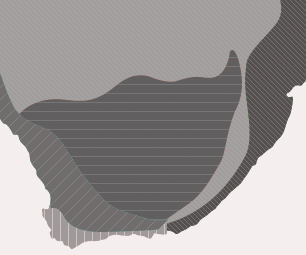







Rate this article
Article well written and informative
Rate this plant
Is this an interesting plant?
Login to add your Comment
Back to topNot registered yet? Click here to register.